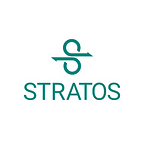An Ultimate Guide to Stratos Decentralized Storage
Like it or not, today, most of our data is held in massive data centers run by the top four centralized cloud service providers (Amazon, Microsoft, Google, and Alibaba) which control 80% of the public cloud market, and are all among the top 10 global companies by market cap.
Instead of relying on expensive, capital-intensive data centers, Stratos is providing decentralized storage service to revolutionize the public cloud by breaking the user uploaded data into chunks, encrypt it and allow the data to be stored across thousands and even later millions (hopefully) of independently owned and maintained nodes of a peer-to-peer (P2P) network.
There have been a few successful distributed file-sharing systems like Bittorrent, Napster, etc. which were not designed as infrastructure to be built upon. Stratos was built with the vision not only to serve the same purpose as such applications as a decentralized web (i.e., security, privacy, no single point of failure, cost-effective) but also to provide the foundation of building and enabling various decentralized applications such as NFT markets, DeFi, DApps, etc. using different components (blockchain, decentralized database, decentralized edge computing, and decentralized storage) and consensus to form a self-sufficient ecosystem.
💎Let’s see how Stratos works:
- Users are able to log in to the Stratos wallet application and upload files to Stratos Decentralized Storage (SDS) network where users can upload, download and manage their files in any format. Stratos also provides users with the option to define the Number of Replicas stored on the Stratos network.
2. Stratos network will return a hash code (URI) that uniquely identifies the file. The URI is permanently recorded in the Stratos blockchain and can be used by the user to retrieve the file later.
3. Users can use Stratos File System to store, download and delete the files.
4. When a video file is selected, the user can choose to view it using the built-in video player immediately. The cost of storing, viewing, and downloading the file is charged in Ozone which is explained in the Stratos Token Economy paper.
5. User can also view a video file directly pasting the file link from the clipboard.
As seen, through the Stratos decentralized storage network, individual and corporate users can not only easily store and retrieve massive data files securely and fast, but also enjoy speedy and real-time streaming and file viewing.
Stratos is the next generation of decentralized Data Mesh that provides scalable, reliable, self-balanced storage, database, and computation network. Stratos is born for scaling blockchain process capacity while retaining the decentralized benefits of a distributed protocol including trustless, traceability, verifiability, privacy and etc.
Stratos is best positioned to support data storage and adoption for developers and users in this ever-expanding digital economy. Stratos strives to make decentralized data adoption easier for the blockchain industry and Web 3.0.
Stay tuned for more info and follow us at:
Twitter | Telegram Group |Telegram Announcement Channel| Medium | Discord | LinkedIn
